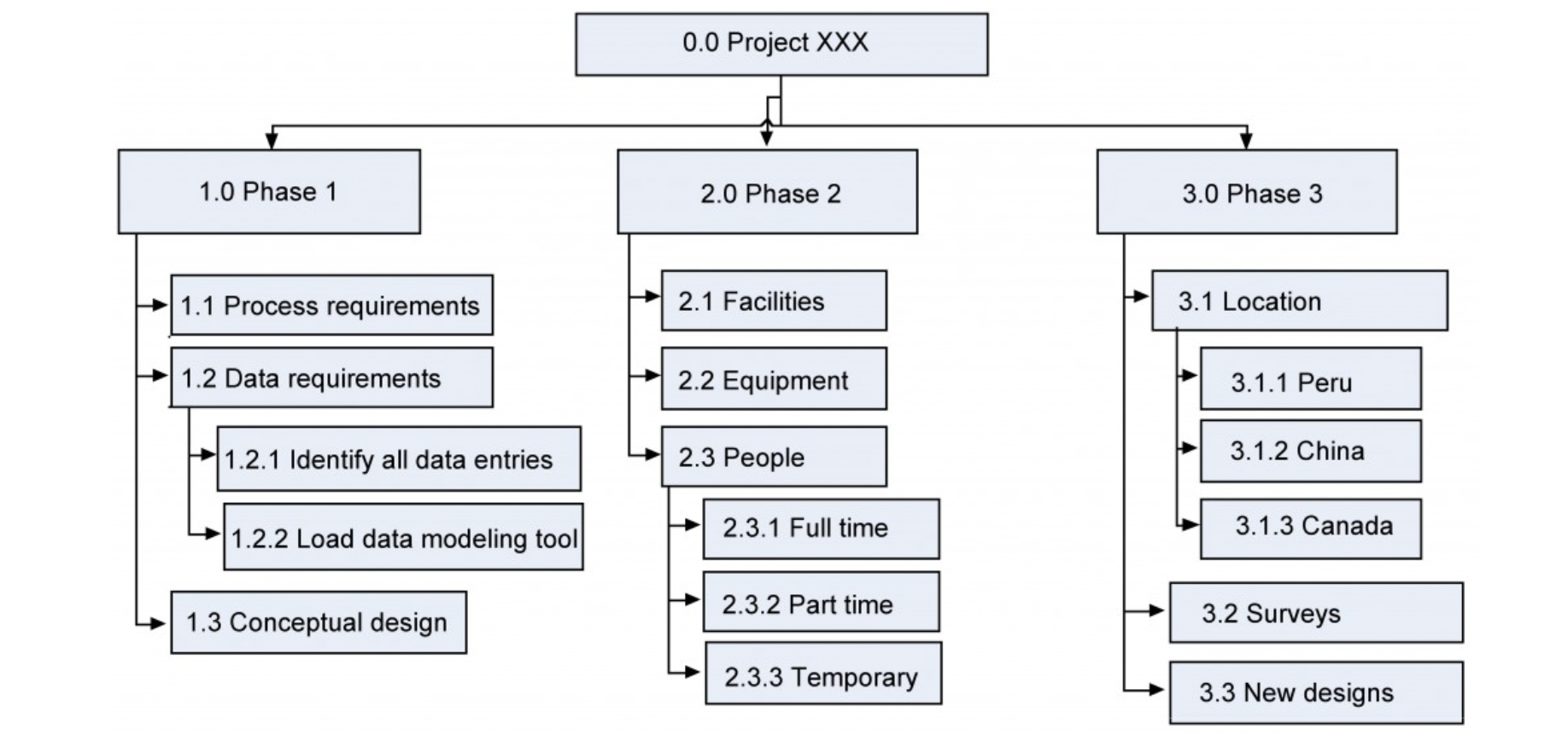Project Initiation and Planning
7 Work Breakdown Structure (WBS)
When planning out the timing of a project, we need to fully understand what work is to be completed. The first phase of this would be a Work Breakdown Structure.
The Work Breakdown Structure (WBS) defines the scope of the project and breaks the work down into components that can be scheduled, estimated, and easily monitored and controlled. Subdivide a complicated task into smaller tasks, until you reach a level that cannot be further subdivided.
You stop breaking down the work when you reach a low enough level to perform an estimate of the desired accuracy. Each descending level of the Work Breakdown Structure represents an increased level of detailed definition of the project work.
WBS describes the products or services to be delivered by the project and how they are decomposed and related. It is a deliverable-oriented decomposition of a project into smaller components. It defines and groups a project’s discrete work elements in a way that helps organize and define the total work scope of the project.
A WBS also provides the necessary framework for detailed cost estimating and control, along with providing guidance for schedule development and control.
The WBS creation involves:
- Listing all the project outputs (deliverables and other direct results)
- Identifying all the activities required to deliver the outputs
- Subdividing these activities into sub-activities and tasks
- Identifying the deliverable and milestone(s) of each task
- Identifying the time usage of all the resources (personnel and material) required to complete each task
The 100 percent rule is the most important criterion in developing and evaluating the WBS. The rule states that each decomposed level must represent 100 percent of the work applicable to the next higher (parent) element. In other words, if each level of the WBS follows the 100 percent rule down to the activities, then we are confident that 100 percent of the activities will have been identified when we develop the project schedule. When we create the budget for our project, 100 percent of the costs or resources required will be identified.

A deliverable-oriented decomposition of a project into smaller components. It defines and groups a project’s discrete work elements in a way that helps organize and define the total work scope of the project.
Any unique and verifiable product, result, or capability to perform a service that must be produced to complete a process, phase or project. (PMBOK Guide)
A milestone is the planned completion of a significant event in the project.
The rule states that each decomposed level must represent 100 percent of the work applicable to the next higher element.

